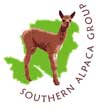For those new to keeping alpacas we generally advise starting with a stock level of 4 alpacas to an acre or 2 for half an acre. More animals can be added later on if the pasture is very lush and needs a bit more cropping!
The area to be grazed needs to be cleared of poisonous plants. If a plant is poisonous to other livestock then it is generally poisonous for alpaca, and us for that matter. As a rule of thumb most shrubs/trees with glossy leaf are poisonous. In particular Rhododendron, Laurel and Yew are highly toxic so need to be well fenced off or removed. The main ground plants to watch out for and remove being Ragwort and the Nightshade family. Do by all means ask for more information if there is any plant/tree you are unsure about.
A simple post and rail or stock fence of 4ft in height is adequate for alpacas as they do not usually challenge fencing, though they often like to rest their chin on the top fence rail! A catchment/feed area will also be required. With information on the area to be grazed we are happy to provide further advice and visit the area to be grazed.
Shelter from both excess of heat and cold is advisable, especially if breeding. Healthy adults can quite happily survive without if there are plenty of trees/shrubs to shelter under. We use 3 sided field shelters and a barn for our herd. Shelters must let some light in as alpaca do not like to go into dark areas.
Fresh water should be provided at all times.
Alpacas are not expensive to keep. We feed ours daily with a vitamin supplement feed such as Camelibra and they always have hay available which is only consumed in any volume during the winter months.
They need an annual booster against tetanus and other clostridial infection in the same way as other livestock/pets do. If breeding, your vet may advise that 2 boosters a year are given.
In winter they require additional vitamins ADE which can be administered as a paste by mouth or in an injectable form.
Anti parasite care for the animals again is similar to that given for other livestock/pets, and will depend largely on the area to be grazed together with soil and weather conditions. Generally, a wormer needs to be given or levels need to be checked a minimum of every 6 months. Your local alpaca vet will be able to advise here, and we can also provide detail of products we use on our herd.
Shearing the animals is necessary once a year at the end of spring and toe nails need to be checked/cut every 4 months.Most alpaca shearers will also check teeth and cut toenails at shearing.
Alpacas give birth during the day and normally before 4pm. They generally give birth quite easily without assistance, though occasionally assistance is required. Most cases can easily be dealt with by the breeder/owner and usually requires no more than a little common sense, a calm, cool head and a “can do” attitude.




